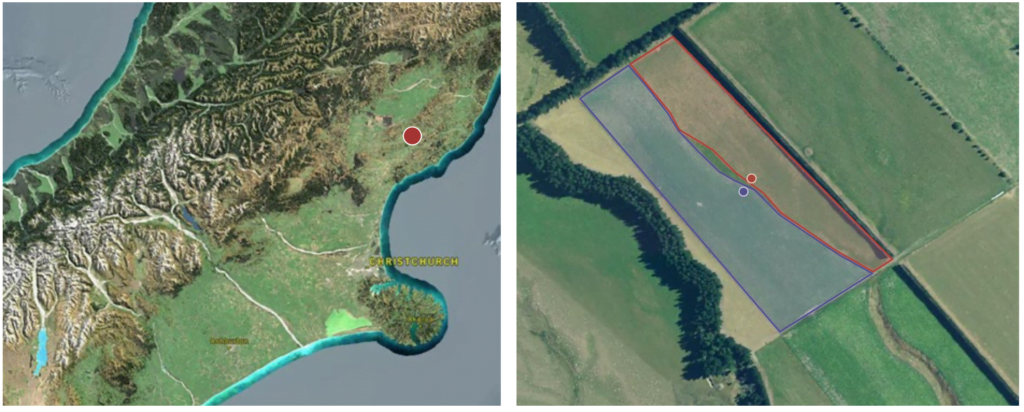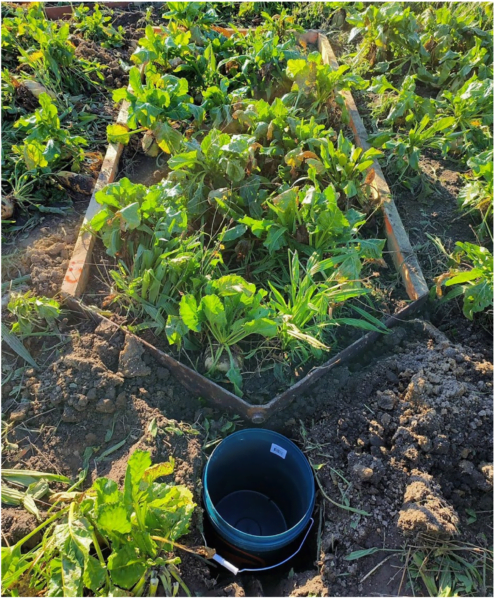Digging into Winter Fodder Beet with Strip-Till
Strip-till cultivation leaves the soil structure more intact compared to full cultivation and could be a useful tool to reduce sediment and nutrient run-off issues with winter grazing of fodder beet.
Growing fresh feed for stock during winter can be a challenge. Fodder beet is a popular choice for many farmers because it provides high-quality feed in a small area in winter, enabling them to provide fresh feed for stock through the colder months. Between 40,000 ha and 50,000 ha of fodder beet is grown annually.
North Canterbury sheep farmer Jim Earl uses fodder beet as a winter grazing crop for his stock. Over the past few years, he has switched from full cultivation to strip-till and has been pleased with the condition of his paddocks and the yields.
Strip-till is widely used in arable farming as it leaves the soil structure more intact and retains more moisture in the soil. The roots from previous crops remain in the soil, strengthening its structure and adding carbon, while residue on the soil surface leads to less erosion from wind and rain. Fertiliser and seeding can be done with a single pass of the tractor, generally making strip-till cultivation cheaper than full cultivation.
Recognising most other livestock farmers don’t use strip-till methods, Earl was keen to be involved with research by agricultural consultant Megan Fitzgerald of Tambo and her team. The aim was to compare run-off from the two methods, with funding from Our Land and Water’s Rural Professional Fund.
“A handful of farmers are planting their fodder beet with strip-till and have observed less compaction and maintained yields compared to their conventionally tilled fodder beet crops,” says Fitzgerald.
Fodder beet is one of a handful of forage crops that reduce the amount of methane produced by dairy animals by about 20% compared to pasture, along with halving nitrous oxide. But methane reduction only kicks in when fodder beet makes up 70% or more of their diet, with muddy soil conditions wiping out nitrous oxide benefits.
Given its value as a fresh winter feed source and the potential of reducing methane in dairy animals and other ruminant stock for part of the year, getting on top of saturated soil damage and run-off issues is important.
Switching to lower soil impact strip-till cultivation may help. Compaction has significant effects on soil, including leaching and increased risk of erosion. Because of less tractor use with strip-till, this cultivation method could lower environmental impacts while maintaining yields, says Fitzgerald.
Using strip-till cultivation to reduce soil damage and nutrient run-off during winter grazing of fodder beet
Why: To establish whether strip-till cultivation affects nitrogen (N), phosphorus (P) and sediment movement, and conduct a financial comparison of methods, to assess the feasibility of strip-till technology being more widely adopted in Aotearoa New Zealand.
Where: A 5 ha winter crop paddock of fodder beet on a sheep farm near Greta Valley, North Canterbury.
Who: Megan Fitzgerald (Agricultural Consultant, Tambo), Simon Bailey (Frames Grain and Seed) and Jim Earl (farmer).
What:
- There was no difference in crop growth from strip-till and conventional cultivation on the single farm studied.
- There was no significant difference in sediment and nutrient run-off between fodder beet crops established using full cultivation and strip-till.
- Collecting a larger sample size across a range of soil types and over several years is needed to distinguish if there is any significant difference.
Planting and management
In mid-October 2022, 3.5 ha of a 5 ha pasture paddock (previously sprayed out) was planted with fodder beet variety Robbos. With around a 5% slope on the conventional plots and a 7% slope on the strip till, the plot slopes were within the 10% maximum in the 2020 national policy standards (Figure 1).
A single pass created six rows of 150 mm cultivated soil, to a depth of 200 mm, and 350 mm of uncultivated soil.
The remainder of the paddock was deep-ripped and disked, rotor-spiked, harrowed and Cambridge- rolled over three passes, before being precision- drilled. A fine seed bed is recommended for fodder beet, and is easier to achieve with full cultivation, which is why farmers use this method when planting this as a winter feed crop.
For ease of management, aside from the initial seeding, the two areas were managed and treated the same. This saw a crop-start fertiliser mixed and then broadcast spread over both areas.


Herbicide, pesticide and fungicide control was also sprayed – once pre-emergence and three times post-emergence. Six weeks into the trial, 100 kg/ha of nitrogen (N) fertiliser was spread.
There were five plots measuring 2 m x 3 m in each of the strip-till and conventional areas. The wooden sides sat 150 mm below the soil, with 50 mm above, and with run-off collected from the metal downward slope end into a semi-buried 20 litre bucket. Soil samples were taken at various spots in both areas, along with weekly soil moisture measurements.
Normalised Difference Vegetation Index (NDVI) by overhead satellites mapped the amount of plant material within the paddock approximately once a month over the trial period, although data from this wasn’t used if the sky was cloudy. This showed no difference in plant mass over time, with the fodder beet plants reaching canopy closure at the same time in both areas.
The sheep tuck in
Around 1,000 in-lamb ewes started strip-grazing in the paddock for five hours a day in late June, taking around five weeks to graze it out.
While acidosis on fodder beet isn’t usually a problem with sheep as it can be with dairy animals, it’s still not recommended as the only feed source for pregnant ewes. To ensure a balanced diet the sheep also had ryegrass pasture in a run-off paddock and baleage.
It’s fair to say the trial didn’t run as well as hoped due to irregular weather patterns. It was very dry during the initial growing period before turning into a wet winter. Although there were many damp days, only three rainfall events produced run-off, including a very heavy event that flooded the trial buckets.
Rainfall exceeding 19 mm within a 24-hour period seemed to trigger the run-off events. The sheep were grazing in the paddock during the first two events.
Within 24 hours of a run-off event water in the buckets was stirred vigorously to mix up any sediment, with 500 ml collected and frozen until the end of the trial.
Testing for total sediment, N, nitrate, dissolved reactive phosphorus (P) and total P showed similar results between strip-till and conventional samplings (Table 1).

Costings
While a 15% cost saving with strip-till compared to conventional tillage would generally be expected (including less fertiliser, chemical use and tractor passes), because all management after the initial seeding remained the same for both areas for convenience, there was just 0.5% saving for the strip-till areas.
Given previous positive outcomes from strip-till cultivation and the difficulties experienced during this trial (including limited run-off events and small sample areas), larger-scale research over a longer period is needed, says Fitzgerald.
This article was first published in New Ground magazine, issue 4. All text is licensed for re-use under Creative Commons Attribution 4.0 International (CC BY 4.0)
Author
 View Our Strategy Document 2019 – 2024
View Our Strategy Document 2019 – 2024




Leave a Reply